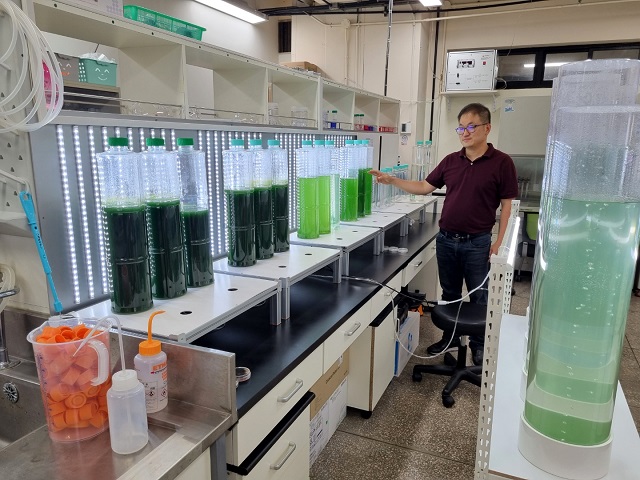
Professor Kwon Jong-hee introduces the carbon resourcification technology at Gyeongsang National University in Jinju on Aug. 11. (Yonhap)
JINJU, Aug. 12 (Korea Bizwire) — A new process that uses the carbon dioxide contained in emissions gases to culture spirulina, a marine micro-algae, has reached the stage of commercialization.
Kwon Jong-hee, a professor at Gyeongsang National University, said Wednesday that the new technology can convert the carbon dioxide contained in emissions gases into a carbonate by aerating it in an alkaline solution, and then use the carbonate as a culture medium for spirulina.
Existing carbon dioxide removal methods using microorganisms have a low removal efficiency of 20 percent, and are therefore difficult to commercialize.
The newly-established carbon resourcification technology, however, can not only remove 100 percent of the carbon dioxide in emissions gases, but also contribute to producing spirulina biomass through massive culturing.
The research showed that compared to a 30 year old oak tree that can absorb 10.8 kilograms of carbon per year, the photo-culture system using the carbon resourcification technology can absorb 90 kilograms of carbon in just 10 days in a 1,000 liter bioreactor.
In particular, unlike oak trees that can remove carbon dioxide only in a limited small space, the photo-culture system can remove the carbon dioxide generated from factories if it is linked to their exhaust systems.
Lina Jang (linajang@koreabizwire.com)






Hello, is it possible to get a contact for Kwon Jong-hee, a professor at Gyeongsang National University